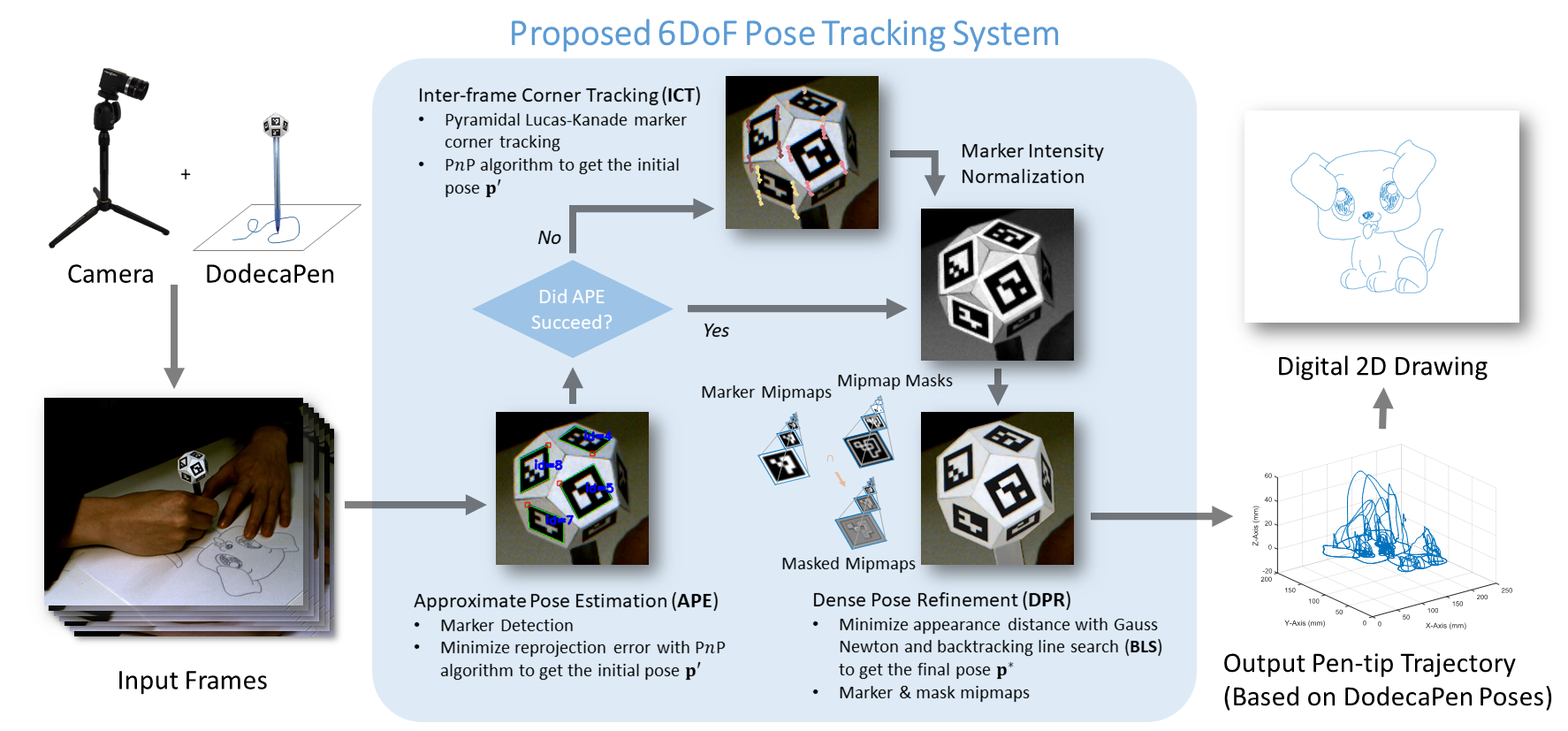DodecaPen: Accurate 6DoF Tracking of a Passive Stylus
(ACM UIST 2017 Honorable Mention Award)








We propose a system for real-time six degrees of freedom (6DoF) tracking of a passive stylus that achieves submillimeter accuracy, which is suitable for writing or drawing in mixed reality applications. Our system is particularly easy to implement, requiring only a monocular camera, a 3D printed dodecahedron, and hand-glued binary square markers. The accuracy and performance we achieve are due to model-based tracking using a calibrated model and a combination of sparse pose estimation and dense alignment. We demonstrate the system performance in terms of speed and accuracy on a number of synthetic and real datasets, showing that it can be competitive with state-of-the-art multi-camera motion capture systems. We also demonstrate several applications of the technology ranging from 2D and 3D drawing in VR to general object manipulation and board games.

Po-Chen Wu, Robert Wang, Kenrick Kin, Christopher Twigg, Shangchen Han, Ming-Hsuan Yang, and Shao-Yi Chien, "DodecaPen: Accurate 6DoF Tracking of a Passive Stylus." In Proceedings of the ACM Symposium on User Interface Software and Technology (UIST), 2017.
@inproceeding{DodecaPen2017,
author = {Wu, Po-Chen and Wang, Robert and Kin, Kenrick and Twigg, Christopher and Han, Shangchen and Yang, Ming-Hsuan and and Chien, Shao-Yi},
title = {DodecaPen: Accurate 6DoF Tracking of a Passive Stylus},
booktitle = {ACM Symposium on User Interface Software and Technology (UIST)},
year = {2017}
}
In the approximate pose estimation step, we detect the binary square fiducial markers in the input images, and estimate the 6DoF pose of the DodecaPen using the PnP algorithm. If fewer than two markers are detected, we use the LK method to track marker corners between frames. In the dense pose refinement step, the pose p' is refined by minimizing the appearance distance between the 3D model of the DodecaPen and image pixels to get the final pose p*. We generate the pen-tip trajectory in the 3D view from the computed 6DoF pose sequence, and visualize the 2D drawing by removing points where the pen tip is lifted off the page.
| Dataset | Synthetic | Real |
|---|---|---|
| Frame Width | 1280 | 1280 |
| Frame Height | 1024 | 1024 |
| Frame Rate | 30 | 60 |
| Focal Length fx | 2401.277 | 2425.167 |
| Focal Length fy | 2401.277 | 2425.167 |
| Principle Point cx | 642.597 | 682.062 |
| Principle Point cy | 558.038 | 566.282 |




























































































Road to VR, VRODO, Yivian, VR Inside, Holographica, VRCplay, VRStation, Cogihay360, VR ITALIA, VR Geek.
We would like to thank Joel Robinson for generating the dodecahedrons, Albert Hwang for doing the video voiceover, and Yuting Ye for her advice and support throughout this work.